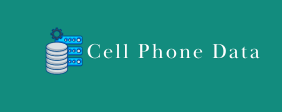In the realm of cold calling, the message you deliver is your handshake, your elevator pitch, and your first impression, all rolled into a few crucial seconds. A compelling message can transform a skeptical prospect into an engaged listener, while a weak one leads to an immediate hang-up. This isn’t just about what you say, but how you say it, focusing on value, relevance, and a clear call to action.
The Foundation of a Powerful Cold Call Message
Before you even pick up the phone, a strategic approach to your message is paramount. It’s not about reciting a script verbatim, but understanding the core elements that resonate with your audience.
Understanding Your Prospect and Their Pain Points
The most effective cold calls are never truly “cold.” Research is your best friend. Tailoring your message to address a specific pain point or aspiration of the prospect demonstrates you’ve done your homework and understand their world. This immediately elevates your credibility beyond a generic sales pitch.
The Power of Personalization
Generic opening lines are dead on arrival. Leverage any information you have – their company, recent news, or a mutual connection – to personalize your opening. Even a simple “I saw your company recently achieved X, and it made me think about Y…” can grab attention and show genuine interest.
Structuring Your Compelling Cold Call Message
Once you have your research, it’s time to build the framework of your message. Think of it as a brief, impactful narrative.
The Irresistible Hook: Grabbing Attention Instantly
You have mere seconds to capture their interest. Your hook should be concise and pique curiosity. Instead of “How phone number data are you today?” try something that immediately positions you as a potential solution provider. This could be a relevant statistic, a surprising insight, or a question that taps into a known industry challenge. For example, “Are you finding it challenging to [common industry problem]?”
Clearly Stating Your Value Proposition
After the hook, immediately articulate what problem you solve or what benefit you offer. Avoid jargon. Focus on the outcome for them. Instead of “We offer a cutting-edge SaaS platform,” try “We help businesses like yours reduce operational costs by 15%.” Quantifiable benefits are incredibly powerful.
The Brief and Relevant Bridge
This is where you connect their pain point to your solution. Don’t launch into a full product demo. Provide just enough information to demonstrate how your offering specifically addresses the challenge you identified. Keep it high-level and benefits-oriented.
Call to Action: The Next Logical Step
What do you want them to do? The goal of a cold call is rarely to close a sale on the spot. It’s usually to secure a follow-up mobile number data for fundraising meeting, send more information, or get an introduction to the right person. Make your call to action clear, concise, and low-pressure. “Would you be open to a brief 15-minute call next week to explore how this could benefit your team?” is far more effective than “Can I tell you about our product?”
Delivering Your Message with Impact
Even the most perfectly crafted message can fall flat without confident and empathetic delivery.
Tone, Pace, and Enthusiasm
Your voice is your most important tool. Speak clearly, at a moderate pace, and with genuine enthusiasm. A monotone lack data delivery signals disinterest. A positive, confident tone is infectious and makes your message more persuasive.
Active Listening and Adaptability
While you have a message, be prepared to deviate. Listen more than you speak. If the prospect interjects with a question or concern, address it directly. This shows you’re not just reading a script but are genuinely engaged in a conversation. Be ready to adapt your message based on their responses.
By meticulously crafting a compelling message that focuses on the prospect’s needs and delivering it with confidence, you transform cold calls into warm opportunities, paving the way for meaningful business relationships.
